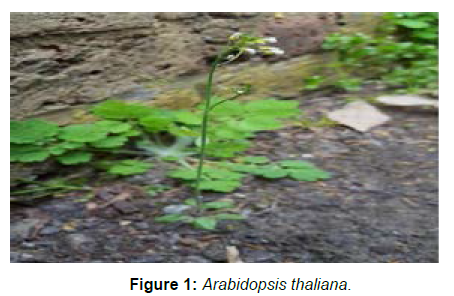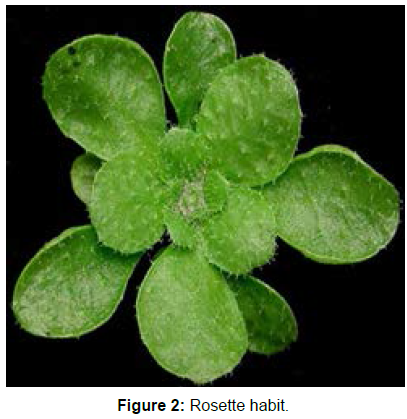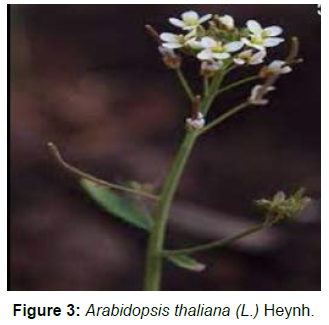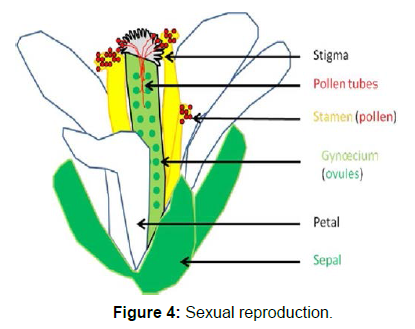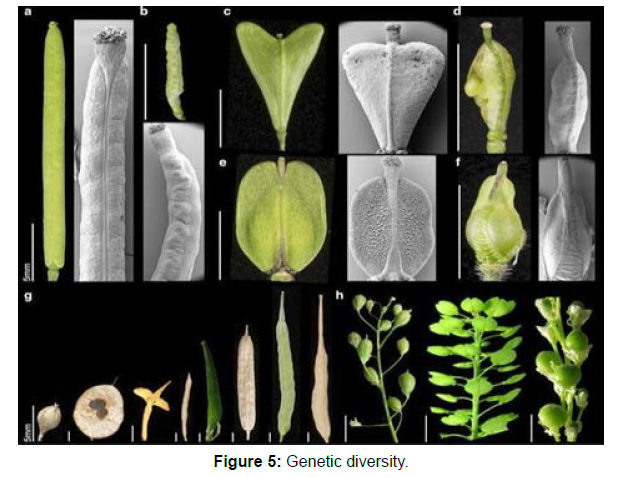Structure Genetically Plant Arabidopsis Thaliana
Received: 13-Feb-2022 / Manuscript No. JPGB-22-54322 / Editor assigned: 17-Feb-2022 / PreQC No. JPGB-22-54322(PQ) / Reviewed: 25-Feb-2022 / QC No. JPGB-22-54322 / Revised: 02-Mar-2022 / Manuscript No. JPGB-22-54322(R) / Accepted Date: 03-Mar-2022 / Published Date: 04-Mar-2022 DOI: 10.4172/jpgb.1000114
Abstract
Decoding the genetic structure of Arabidopsis thaliana diversity throughout its geographical area provides a basis for explaining the population history of this model plant. Arabidopsis taliana is studied as a model plant with many characteristics such as probable origin, local and global genetic diversity model, population structure, adaptation and so on. The purpose of this paper is to accurately assess the structure of the global population of Arabidopsis thaliana. The genetic structure of Arabidopsis thaliana populations in 16 populations of this species is examined by electrophoretic evaluation of 9 enzyme systems. The results show that the habit of dense growth of Arabidopsis rosette is maintained by convergent activities of ARABIDOPSIS THALIANA HOMEOBOX GENE 1 (ATH1) and DELLA genes, which signal gibberellin.
Keywords: Genetics; Diversity; Arabidopsis; Della
Keywords
Genetics; Diversity; Arabidopsis; Della
Introduction
Arabidopsis thaliana is a wild, annual and self-cultivating plant with a wide geographical area as a native species in Eurasia. In the last decade, this species has become the main model plant not only for molecular biology studies, but also for processing to the ecological and evolutionary basis of plant adaptation. Decoding the genetic structure of A. thaliana diversity across its geographical area is now a key goal because it describes its current ecological distribution, reflects its population history, and carefully designs and analyzes experimental populations to determine molecular mechanisms. Used to make it possible. Other studies have been conducted on the history of A. thaliana in East Asia and beyond. Nuclear analysis and chloroplasts of A. thaliana populations from China also show significant genetic diversity and geographical structure, hence the rapid spread of A. thaliana from west to east of Central Asia [1] (Figure 1).
During the reproductive stage, rosette plants often produce a long inflorescence stem that may be adapted to facilitate seed dispersal. A clear example of a plant with a rosette habit of the model species is Arabidopsis thaliana. Despite extensive genetic and developmental studies, the genetic basis for this major aspect of growth habit remains virtually unknown. An important indication is that vegetative internode length can be caused by interference with phyto chrome signaling, as seen in phyA phyB double mutants, phyB phyD triple mutants, or phyB bop2 double mutants.
However, phyto chromes control a variety of processes throughout the shoot, and as a result, all of these mutant compounds have pleiotropic effects on plant growth [2] (Figure 2).
Arabidopsis thaliana (L.) Heynh. It has always been considered as a plant species for genetic research. This view has been confirmed in recent years. Because of the small size of the species genome it has been suitable as a tool in plant molecular genetics. It is therefore surprising that little is known about the genetics of the A.thaliana population except for a few traits. There are no published reports on the genetic structure of A. thaliana natural populations based on allozyme diversity [3] (Figure 3).
This paper presents the results of a large-scale study of the global population of Arabidopsis thaliana as an example of a natural creature that, like many others, exists in a predominantly continuous habitat that is much larger than the individual migration range. Participates in sexual reproduction (with a minimum of regularity), and exists to some extent as a common human affair, but has no agricultural purpose [4] (Figure 4).
Understanding the amount and distribution of genetic diversity and structure in natural populations is fundamental to ecological genetic studies. The amount of genetic diversity within and between populations both affects and responds to responses to selective pressures and evolutionary processes such as gene flow and genetic drift, while research on population structure can be useful for understanding population dynamics. Historical events etc., which in turn are highly influenced by environmental conditions [5] (Figure 5).
Materials and Methods
DNA isolation, sequencing and genotyping
Genomic DNA was isolated from leaf samples collected in the field using a small QiagenTM DNeasy Plant kit according to the manufacturer's protocol. DNA quality on agarose gel was 0.8% and measured using a nano drop spectrophotometer. The same set of primer pairs was used to amplify the CP loci.
Conclusion
Arabidopsis thaliana is a wild, annual and self-cultivating plant with a wide geographical area as a native species in Eurasia. During the reproductive stage, rosette plants often produce a long inflorescence stem that may be adapted to facilitate seed dispersal. A clear example of a plant with a rosette habit of the model species is Arabidopsis thaliana.
Arabidopsis thaliana (L.) Heynh. It has always been considered as a plant species for genetic research. This view has been confirmed in recent years.
This paper presents the results of a large-scale study of the global population of Arabidopsis thaliana as an example of a natural creature that, like many others.
Understanding the amount and distribution of genetic diversity and structure in natural populations is fundamental to ecological genetic studies.
References
- Brennan AC, Méndez-Vigo B, Haddioui A, Martínez-Zapater JM, Picó FX, et al. (2014) The genetic structure of Arabidopsis thalianain the south-western Mediterranean range reveals a shared history between North Africa and southern Europe. BMC Plant Biol 14:1-13.
- Ejaz M, Bencivenga S, Tavares R, Bush M, Sablowski R (2021) Arabidopsis Thaliana Homeobox Gene 1 controls plant architecture by locally restricting environmental responses. Proc Natl Acad Sci U S A 17:1-8.
- Abbott RJ, Gomes MF (1989) Population genetic structure and outcrossing rate of ArabidopsisThaliana (L.) Heynh. Heredity 62:411-418.
- Platt A, Horton M, Huang YS, Li Y, Anastasio AE, et al. (2010) The Scale of Population Structure in Arabidopsis Thaliana. Plos Genet 6:1-8.
- Tyagi A, Singh S, Mishra P, Singh A, Tripathi AM, et al. (2016) Genetic diversity and population structure of Arabidopsis Thaliana along an altitudinal gradient. AoB Plants 8:1-17.
Indexed at, Google Scholar, Crossref
Indexed at, Google Scholar, Crossref
Indexed at, Google Scholar, Crossref
Indexed at, Google Scholar, Crossref
Citation: Tajalifar M, Rasool M ( 2022) Structure Genetically Plant Arabidopsis Thaliana. J Plant Genet Breed 6: 114. DOI: 10.4172/jpgb.1000114
Copyright: © 2022 Tajalifar M, et al. This is an open-access article distributed under the terms of the Creative Commons Attribution License, which permits unrestricted use, distribution, and reproduction in any medium, provided the original author and source are credited.
Share This Article
Open Access Journals
Article Tools
Article Usage
- Total views: 1743
- [From(publication date): 0-2022 - Apr 05, 2025]
- Breakdown by view type
- HTML page views: 1261
- PDF downloads: 482

